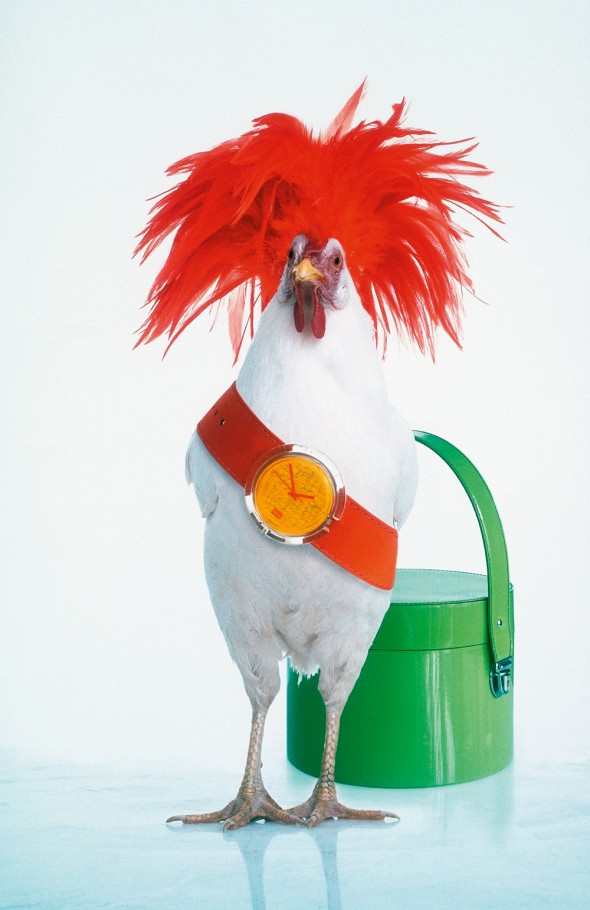A Man Who Made Time Come to Life Before the Clock Stopped

It’s a cliché, but Nicolas Hayek was truly a genius. Looking at Swatch, his brand of flashy, affordable statement watches, the extent to which the man was ahead of his time is mind-boggling. Everyone, from the powerhouses of mainstream fashion to the most luxurious of high-fashion labels, follows in his footsteps, whether they acknowledge it or not. Because Hayek not only made a perfect product, he popularized and created many of the most common practices of fashion business today.
First, there was the product itself. Watches (before everyone had cell phones on hand) were a necessary part of life, but infinitely sellable. Swatch watches came in such an infinite number of colors, patterns and themes that anyone and everyone could find a watch suited to their tastes. Finding the perfect one felt like a victory. Aesthetically, they could range from utilitarian and forgettable to splashy and eye-catching. They were small, graspable and cute: a perfect product to imagine owning and collecting. And much like bumper stickers, they were very affective at broadcasting your personality and allegiances. In these watches, you can still see a little piece of yourself; a glimmer of who you were at the time you bought it.
Second, there were the “special” watches. Swatch was one of the first brands to do collaborations and limited editions. Artists like Keith Haring and designers like Agatha Ruiz de la Prada made Swatch watches that were amazingly designed (and are now sold for hundreds of dollars if kept in good condition). Similarly, the brand created “Swatch the Club” in 1990, which released special edition watches for members. This was decades before the influx of designer collaborations, “members only” sales sites, and diffusion fashion lines we see today.
Third, there was the material. The materials of Swatches were a study in juxtaposition: the mechanized parts within the case were high-tech, extremely accurate and sleek; by contrast, the bands and faces, which showcased the design of the watch, were most often plastic. Yet instead of being seen as an unworthy, the signature plastic became part of the realm of design. Today, one doesn’t blink at seeing astronomically priced neoprene trench coats or wonderfully crafted acrylic furniture, and this is in large part due to Swatch watches. Swatch proved that while plastic might be a cheap material, it’s easy to mold into something beautiful at a fraction of the cost.
Fourth, there was the price. Everyone is in a tizzy over the recent opening of the giant Forever 21 in Times Square. Brands like Forever 21, H&M and IKEA, which thrive by providing as many designer-esque options as possible at aggressively low prices, are doing better than the vast majority of retailers. From whence came this market strategy? You guessed it: Swatch. The brand completely revitalized the Swiss timepiece industry by creating more accurate timepieces that could be assembled and sold at a lower price.
Finally, there was the interplay between the reality and the dream, the exploitation and regeneration of capitalism. The reality is that the expectation and demand for aggressive pricing that Swatch provided a model for, would eventually lead to the current state of affairs, where outsourced labor is increasingly in demand. Yet Swatch also embodied a certain dream: it might have been mass-produced, mass-marketed, and mid- to low-priced, but the Swatch watch allowed everyone, rich and poor alike, to feel like they had a little slice of success, a little slice of good design, on their wrists. In the Swatch watch, one can see a success story, a dream of social and financial ascension, and a reminder that beauty isn’t necessarily expensive.
That Hayek recognized the potential of Swatch speaks to his keen intellect and instinct. It’s a shame that he’s no longer around, because businesses, governments, and fashion students alike could benefit from his council. At least we all have these photos, and our own personal collections of Swatches to remind us of what we could be. And of how damn colorfully we all dressed in the ‘80s and early ‘90s.
– Max Kessler

